+ By Jennifer Kulynych + Photos by Alison Harbaugh
“So, here’s what happened: I wanted to win!”
Jonathan Seningen, the 41-year-old who was, until recently, executive chef at Blackwall Hitch in Annapolis, is explaining why, on the eve of the annual Eastport Oyster Roast competition last March, he ditched his idea for an Asian-influenced soy-poached oyster with katsuobushi (bonito flakes) and started all over again.
“It was missing a certain zing,” he decided, “and I hated it.”
Going back to the drawing board with hours to go meant he wouldn’t have time to order new ingredients. Also, Seningen needed an oyster dish he could assemble quickly in a tight space. He’s tall, and the next day in the Maritime Museum, he’d be hunched over a little table while prepping 300 servings.
With small-town bragging rights on the line, he was feeling the pressure. But Seningen is no stranger to high-octane cooking. Classically trained at the French Culinary Institute in New York, he paid his dues in demanding kitchens, including Le Paradou, where, under Yannick Cam, the chef who brought nouvelle cuisine to Washington, DC, Seningen says he practically lived on-site. Seningen later became executive chef at several different DC restaurants.

Considering his oyster dilemma, Seningen remembered a time when, working under the renowned chef Paul Liebrandt in Manhattan, he’d poach oysters and wrap them with thin slices of ribeye. He considered riffing on that dish by adding a quintessentially Maryland touch—crab imperial. In the Blackwall Hitch freezer, he happened to have a crab cake mixture and a richly marbled beef filet.
A dish with oysters, beef, and crab sounds complicated, but Seningen realized he could simplify it by splitting the prep. In the restaurant kitchen that night, he would butter poach the oysters and return them to their shells, topping each with a shaving of filet. The next day, at the Maritime Museum, he would add the crab imperial and quickly gratinée the topping with a blowtorch.
The idea for his oyster dish began taking shape. After one taste, Seningen he knew he was on the right track but wasn’t there yet. “It was just unctuous,” he concluded. Rich and creamy, but too monochromatic, it needed a lighter note.

So he blended herbs—green onion, lemon, oil, and salt—to make a vivid green sauce that Seningen’s wife, Katie, calls “fresh grass and sunshine.” Laced across the imperial topping, the sauce lent a playful balance to the richer flavors of the meats.
“It provided the levity to the gravity,” Seningen concluded. The crowds at this year’s Oyster Roast agreed, returning to Seningen’s station to enjoy a second or third taste before voting him the People’s Choice Award for the dish he calls Butter Poached Oyster Imperial with Kobe Beef and Lemon Parsley Sauce.
Telling this story, Seningen laughs, jazzed by the happy ending, and slaps the table. His brown hair is tugged into a point at the top of his head like a middle-school skateboarder. In his faded red T-shirt and jeans, Seningen looks more college student than the guy in charge. But when he talks food, he’s suddenly serious, his comments are thoughtful, and the executive chef emerges.

Seningen reveres technique. When asked which chefs he admires, he singles out Thomas Keller for his ability to coax diverse flavors from simple foods using various cooking methods. The conversation takes a deep dive into molecular gastronomy and the right and wrong ways to emulsify food into the foams of modernist cooking.
One might wonder why a professional chef with an obvious passion for the art of cooking and experience in fine restaurants in New York and DC would take a career detour, showing up at an upscale-casual restaurant in Annapolis, a small city where the seedlings of food culture may be sprouting, but where the typical diner may often want the familiar steak or crab cakes, traditionally cooked, preferably with water-view seating.
Without the long commute to DC, Seningen has more quality time to share with his family. He loves living on five acres in West River with his wife and two children—Amelia, age seven, and two-year-old Ronin—and his garden, which he insists was “freaking gorgeous” last year until heavy rains took their toll.
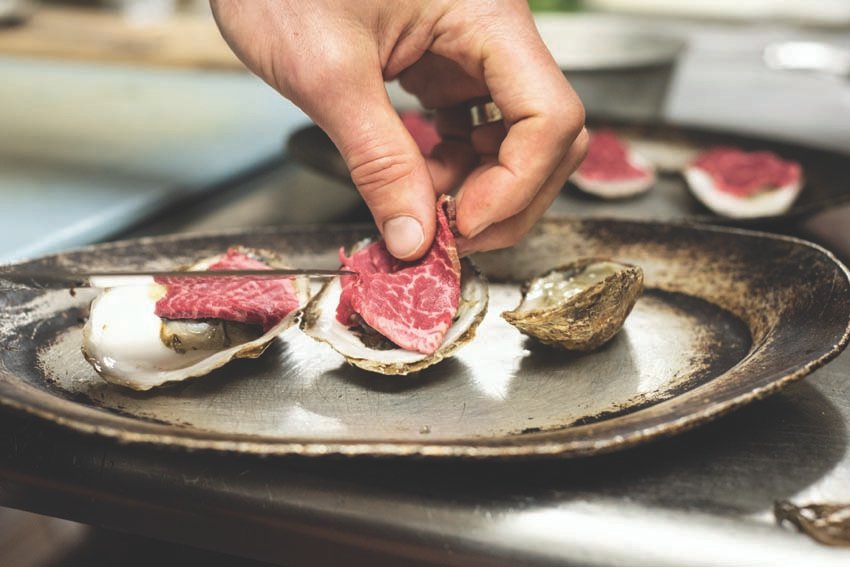
That garden is also the source of fresh local ingredients for Seningen’s dishes. In Blackwall Hitch’s kitchen, Seningen kept a big plastic tub of his kale, fresh from the garden. While store-bought kale doesn’t always look appetizing, Seningen’s was so inviting that you could imagine eating it raw.
Although many of Blackwall Hitch’s clientele weren’t looking for adventure when eating out, the restaurant provided Seningen a venue to connect with those who might be, by offering monthly “chef’s table,” prix fixe dinners, evenings featuring a unique menu composed by Seningen.
“We’ve done bone marrow, pig trotter, sweetbreads, octopus,” he says. Given the chance, he is willing to take a diner beyond her comfort zone. But these dinners (limited to 30 guests, often sold out months in advance) were never only about the food. At Seningen’s chef’s table, one could explore the creative process behind fine cooking. For example, when Seningen served roasted Maine lobster with fresh rhubarb, vanilla, and Sauternes, if you were curious enough to try sweetened fruit and dessert wine on your lobster, then he helped you appreciate the artistry of the dish and quality of its ingredients.
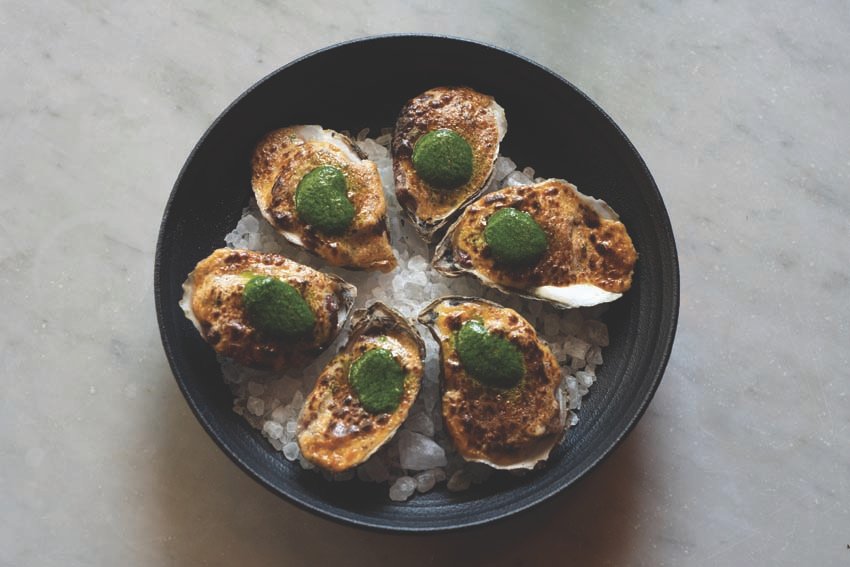
Recently, Seningen left Blackwall Hitch and is working from home for a company that recruits chefs while he grows some creative ideas of his own. “Food is a language,” he insists, and he’s excited about teaching children the vocabulary of cooking. One possibility is “Ask Chef Dad” videos, in which his daughter can ask questions that children most want to know about cooking, and then together they explore answers.
Even if he winds up not cooking professionally, Seningen hopes to help build a vibrant, discerning food culture in Annapolis. He senses that momentum and mentions several cooks doing interesting work in the city, but is mindful that many Annapolitans prefer crab cakes to innovative cuisine. Changing their minds will take time. The process, he reflects, is much like a slow-turning boat. █

Chef Jonathan Seningen checks on his tomato plants at his home garden. Photo by Alison Harbaugh 
Chef Jonathan Seningen at his southern Anne Arundel County home. Photo by Alison Harbaugh 
Chef Jonathan Seningen chops vegetables that were picked fresh from his home garden. Photo by Alison Harbaugh 
Jonathan Seningen, former executive chef at Blackwall Hitch in Annapolis prepares an dish oyster dish for which he recently won the People’s Choice Award for during the Oyster Roast and Sock Burning which is held every year at the Meritime Museum in Eastport (Annapolis). Photo by Alison Harbaugh. Sugar Farm Productions 
Chef Jonathan Seningen checks on his squash plants at his home garden. Photo by Alison Harbaugh 
The award winning oyster dish prepared by Jonathan Seningen while he was executive chef at Blackwall Hitch in Annapolis. The dish is made by topping a fresh oyster with a thin slice of Kobe beef, baked and covered with Imperial Sauce, flame broiled and finished off with a lemon herb sauce. Photo by Alison Harbaugh. Sugar Farm Productions 
Jonathan Seningen, executive chef at Blackwall Hitch in Annapolis prepares an dish oyster dish for which he recently won the People’s Choice Award for during the Oyster Roast and Sock Burning which is held every year at the Meritime Museum in Eastport (Annapolis). Photo by Alison Harbaugh. Sugar Farm Productions 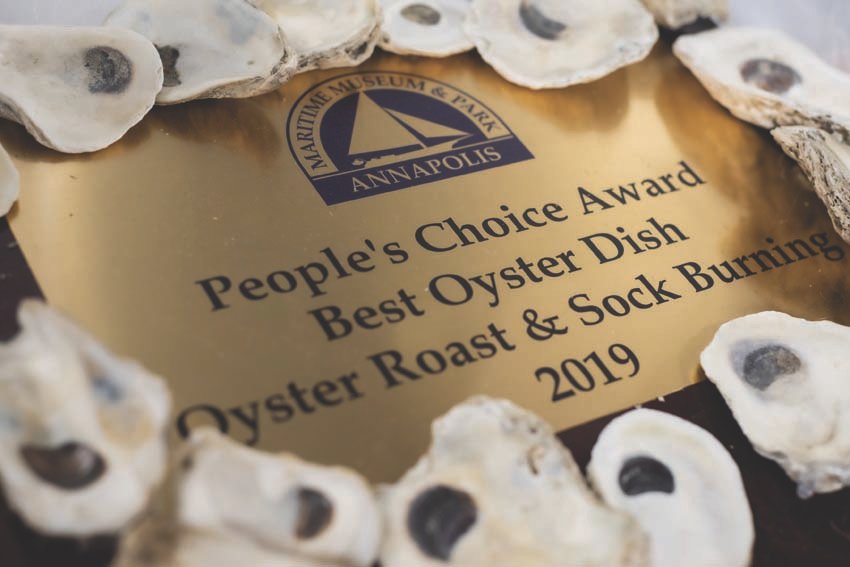
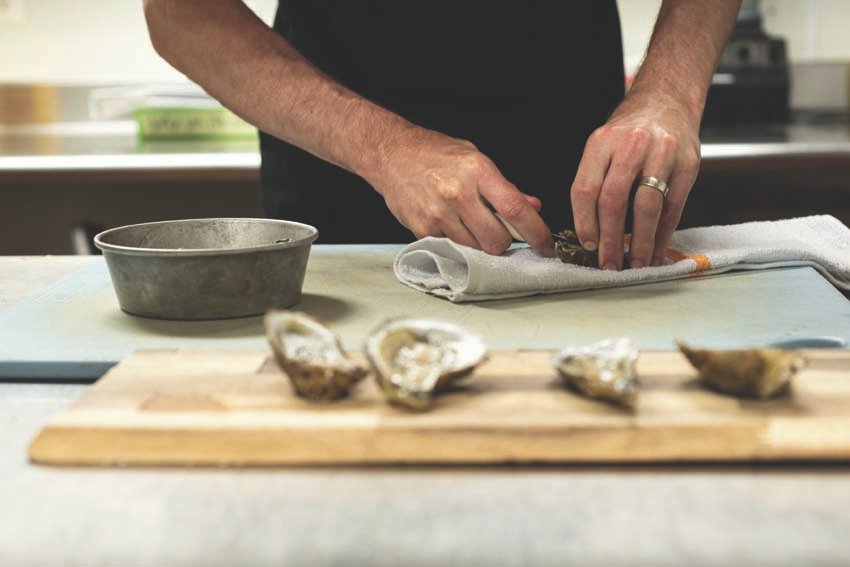
Jonathan Seningen, former executive chef at Blackwall Hitch in Annapolis prepares an dish oyster dish for which he recently won the People’s Choice Award for during the Oyster Roast and Sock Burning which is held every year at the Meritime Museum in Eastport (Annapolis). Photo by Alison Harbaugh. Sugar Farm Productions 
Chef Jonathan Seningen chops vegetables that were picked fresh from his home garden. Photo by Alison Harbaugh 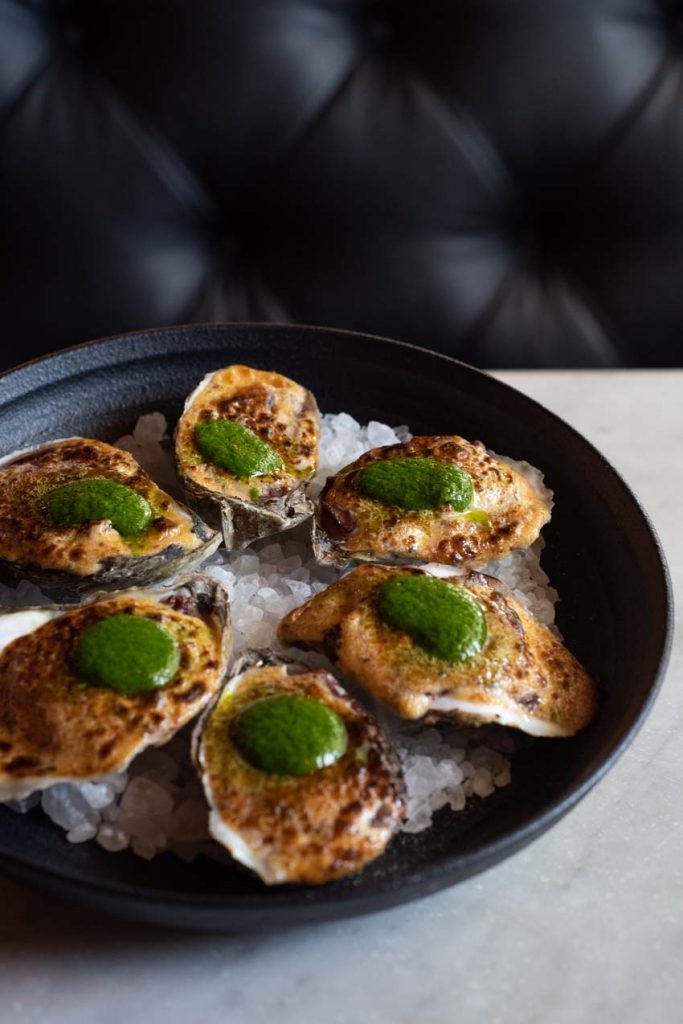
The award winning oyster dish prepared by Jonathan Seningen while he was executive chef at Blackwall Hitch in Annapolis. The dish is made by topping a fresh oyster with a thin slice of Kobe beef, baked and covered with Imperial Sauce, flame broiled and finished off with a lemon herb sauce. Photo by Alison Harbaugh. Sugar Farm Productions 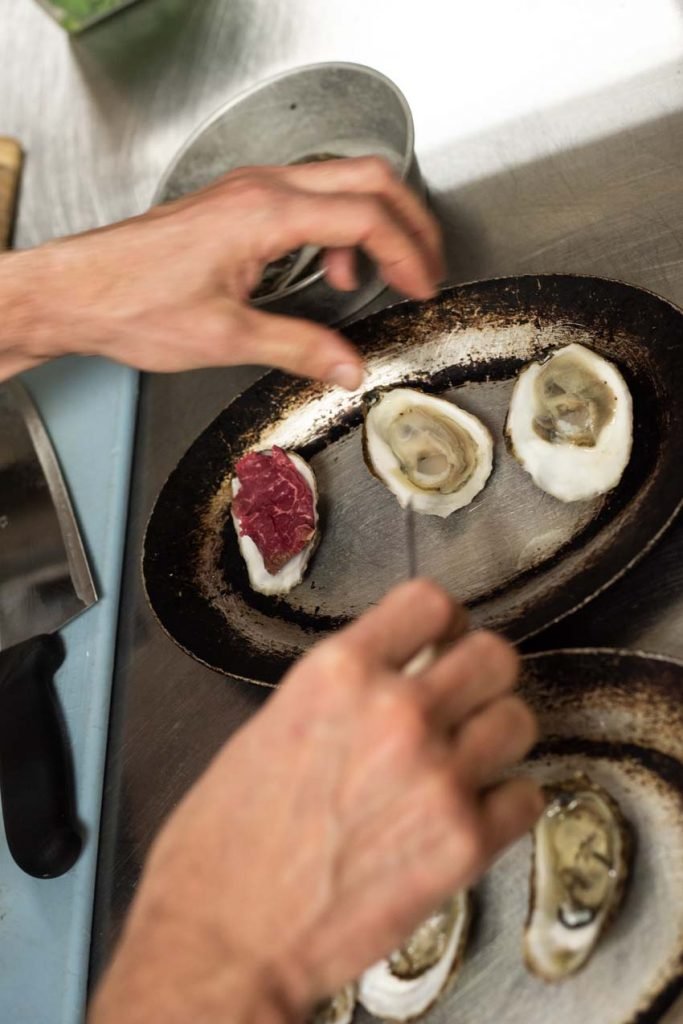
Jonathan Seningen, former executive chef at Blackwall Hitch in Annapolis prepares an dish oyster dish for which he recently won the People’s Choice Award for during the Oyster Roast and Sock Burning which is held every year at the Meritime Museum in Eastport (Annapolis). Photo by Alison Harbaugh. Sugar Farm Productions
